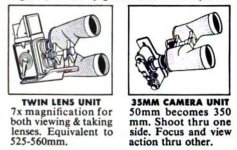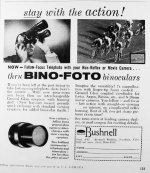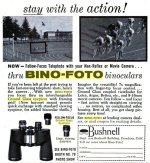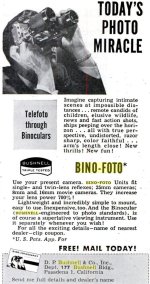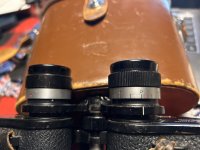John Dracon
John Dracon
Many years ago I picked up a pair of Bushnell 7x50 CF binoculars designed for dual purpose: general viewing and telephoto lens. The left ocular has a bayonet twist system to hook into a Bushnell adapter for telephoto shots with a single lens reflex camera. The overall finish is outstanding. The body design is Bausch & Lomb, and internal uiltra-violet filters give the blue hue to the objectives. The leather strap is braided, and the leather case is deluxe, similar to the old Zeiss smooth leather tan dyed cases.
The view is truly outstanding and to my eyes better than any 7x50 I have encountered. The FOV is the standard 7.1 degrees. When focused on an optical chart, even the edges have minimal distortion. Also, the 3D effect seems more pronounced with this binocular compared to other porros, and the DOFis excellent.
I have tried to research this model but have come up with no information. Is there anyone in BF land who knows anything about the Bushnell Bino-Foto?
Would appreciate comments. Joihn
The view is truly outstanding and to my eyes better than any 7x50 I have encountered. The FOV is the standard 7.1 degrees. When focused on an optical chart, even the edges have minimal distortion. Also, the 3D effect seems more pronounced with this binocular compared to other porros, and the DOFis excellent.
I have tried to research this model but have come up with no information. Is there anyone in BF land who knows anything about the Bushnell Bino-Foto?
Would appreciate comments. Joihn






